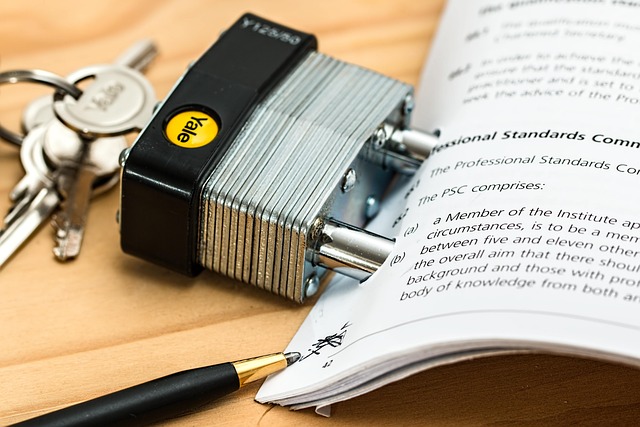In an age where data is as valuable as currency, the ways we protect it have become as important as the data itself. Data phishing—an umbrella term that covers email scams, SMS trickery, and deceptive social media tactics—has evolved into a sophisticated threat that targets the human element of cybersecurity. Understanding the etiquette of how we interact with digital communications is a powerful, yet often overlooked, layer of defense. This article examines the social nuances that can help you spot, resist, and report data phishing attempts, while also exploring how cultural trends influence both the attackers’ methods and the defenders’ responses.
The Human Factor: Etiquette as a Shield
Most phishing incidents rely on trust and social proof. Attackers impersonate colleagues, trusted brands, or even friends, exploiting the natural inclination to respond promptly and courteously. When we approach every digital message with a mindful stance—checking the sender’s address, verifying authenticity before clicking, and maintaining a skeptical yet polite tone—we reinforce a community of vigilance. This etiquette is not just about individual safety; it becomes a social norm that discourages malicious actors from succeeding.
- Always confirm the source of an unexpected request before providing personal data.
- Respond in a calm, courteous manner; attackers often test how quickly you will comply.
- Use the same language and tone your organization’s official communications employ.
- Document and share any suspicious interactions to strengthen collective awareness.
Case Study: A Typical Phishing Email
Consider an email that claims to come from your bank, asking you to click a link and update your account details. The message uses the bank’s logo, mimics its tone, and includes a personalized greeting. The etiquette you observe in this situation—double‑checking the sender’s email address, looking for subtle grammatical errors, and verifying the link by typing the URL directly into a browser—turns a potentially dangerous interaction into a routine safety check. In this way, etiquette transforms a personal moment of vulnerability into an act of communal responsibility.
“The best defense against phishing is to cultivate a culture where skepticism and courtesy coexist. Treat every unsolicited request as a test of your vigilance, not as a directive.” – Cybersecurity Analyst
Social Trends that Shape Phishing Tactics
As society becomes increasingly digital, new social trends shape the way phishing attacks are designed. The rise of remote work, the prevalence of instant messaging platforms, and the normalization of sharing personal data on social networks all create fertile ground for attackers. For example, the shift toward video conferencing has introduced new phishing vectors: malicious QR codes embedded in virtual backgrounds or phishing links disguised as “meeting notes.” Understanding how these trends influence threat landscapes is essential for maintaining an up‑to‑date etiquette framework.
Digital Etiquette in the Era of Social Media
Social media platforms are breeding grounds for “phish‑s” that masquerade as friends, family, or influencers. Attackers craft messages that echo personal interests or recent posts, creating a false sense of familiarity. A mindful etiquette approach encourages users to verify the authenticity of a direct message by cross‑checking the profile, looking for consistent posting patterns, or asking a mutual contact for confirmation. When people practice these steps collectively, the signal to attackers that their attempts are likely to fail becomes louder.
- When a direct message requests sensitive information, pause and evaluate its context.
- Cross‑reference the sender’s profile with known contacts.
- Ask for a second form of verification, such as a phone call.
- Report the account if you suspect malicious intent.
Policy and Practice: Integrating Etiquette into Corporate Culture
Organizations that embed data phishing etiquette into their policies see higher compliance and lower breach rates. By developing clear, role‑specific guidelines—such as “verify before you click” for all employees and “verify the sender’s identity” for IT staff—companies create a shared language of caution. Training sessions should focus not only on technical defenses like two‑factor authentication but also on social cues, such as recognizing urgent language or unusual requests for personal information.
Moreover, leadership must model the expected behavior. When executives demonstrate careful verification before replying to suspicious emails, they set a tone that permeates the organization. A culture of respectful skepticism becomes part of the company’s brand, enhancing trust both internally and externally.
Practical Tips for Everyday Users
Below are concise guidelines that can be applied in day‑to‑day digital interactions:
- Check the Sender. Hover over the email address or phone number to ensure it matches the official domain or verified contact.
- Beware of Urgency. Legitimate institutions rarely use high‑pressure tactics. If a message demands immediate action, pause and verify.
- Use Secure Channels. Prefer official portals or secure messaging apps for sharing sensitive data, rather than clicking links in emails.
- Report Suspicious Content. Most organizations have a dedicated reporting line or mailbox. Use it promptly; early reporting helps contain the threat.
Looking Forward: The Future of Etiquette‑Driven Protection
As AI and machine learning become more integrated into both legitimate business processes and malicious campaigns, the distinction between authentic and deceptive content will blur further. Yet, human etiquette—an innate blend of curiosity, respect, and skepticism—remains an effective countermeasure. Emerging technologies like AI‑powered email scanners can flag suspicious content, but the final decision rests with the user. Cultivating an attitude of mindful engagement, coupled with organizational policies that reinforce respectful skepticism, will create a robust defense layer against data phishing.
Community Engagement and Continuous Learning
Phishing attacks evolve with the cultural zeitgeist; therefore, the etiquette that protects us must also evolve. Communities, whether corporate or broader, benefit from shared lessons learned from incidents. Regularly scheduled “phishing awareness” challenges, where employees test each other’s responses in a controlled environment, help reinforce the etiquette framework. Likewise, public forums or internal newsletters that summarize recent phishing trends and successful defenses keep everyone informed and engaged.
Conclusion: Etiquette as a Cornerstone of Data Protection
Data phishing is not a solitary technical problem; it is a social one that thrives on human habits and cultural patterns. By adopting a respectful yet skeptical approach to every digital interaction, individuals and organizations can turn the tide against attackers. The etiquette of cautious engagement—verifying sources, responding politely but prudently, and reporting anomalies—becomes a powerful tool that protects personal privacy and preserves collective trust in our digital ecosystems. Embracing this etiquette, therefore, is not just a best practice; it is an ethical imperative in an age where data is both our most valuable asset and our most vulnerable point of entry.




